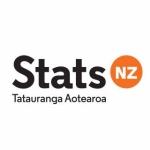Measuring value added in the education and health industries
Measuring value added in the education and health industries presents new methods for estimating the value added of New Zealand’s education and health industries. These build on recommendations made in Statistics New Zealand’s (2010) measuring government sector productivity study.
Using detailed data from the Ministry of Education and the Ministry of Health, the new methods for annual chain-volume value added for education and health improve the existing value-added measures for these industries. As refinements, the revisions to the previous published estimates are minimal and the long-term trends in value added are similar.
The value-added measures for both education and health now better reflect the relative values for each activity in the industry. Coverage is widened by including additional activities.
In the production approach of GDP, value added for an industry is measured as the value of goods and services produced less the cost of goods and services used in the production process. In other words, value added equals output less intermediate consumption. This is a measure of activities undertaken, not a measure of outcomes. Explicit quality adjustments – for example to account for a better service being provided – were not made to the output measures. The appropriate measure for how to adjust using available data has yet to be determined, both in New Zealand and internationally. Finer disaggregation of the indicators allows for some implicit quality adjustment.
The new value-added measures were incorporated into the national accounts in the September 2012 quarter gross domestic product release. The measures will be used in productivity statistics for the health and education industries – to be released later in 2013.
ISBN 978-0-478-40811-9 (online)
Published 25 January 2013
Available files
Measuring value added in the education and health industries (PDF, 21 pages, 485kb)
